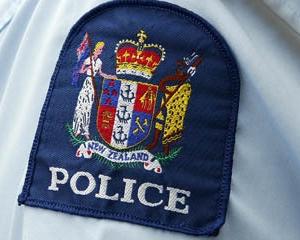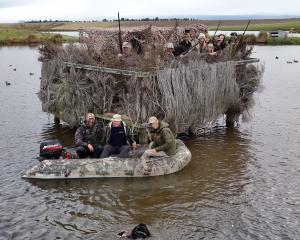
New Zealand’s largest supermarket company has admitted it has rolled out facial recognition CCTV technology in some stores, sparking a firestorm of media controversy this week, culminating in Prime Minister Jacinda Ardern expressing concerns over the practice.
Inquiries from the Otago Daily Times about a man mistakenly identified as a shoplifter at Centre City New World led to Foodstuffs NZ disclosing it had deployed facial recognition in some of its North Island stores.
Some of its South Island stores, including Centre City New World in Dunedin, use the Auror security system, designed to enable closer collaboration between police and retailers, but this system does not involve automatic facial recognition.
Facial recognition CCTV technology is commonly used by retailers overseas to automatically identify known shoplifters. It is also used by police in England and local governments in China to track people in public places. After the story broke, the ODT canvassed local retailers and malls, police, the Aviation Security Service, the New Zealand Customs Service, the Department of Corrections, Countdown, service stations, airports, casinos, museums and the Dunedin City Council, asking if they used automatic facial recognition security technology.
Mitre 10 was the only retailer to join Foodstuffs in acknowledging it had deployed facial recognition technology, while Countdown and the Dunedin Casino would not confirm or deny if they used facial recognition. Mitre 10 spokeswoman Alison Oldridge said there was "just one store in Auckland that has facial recognition software in place."
Customs had deployed "eGates", which used automatic facial recognition to verify passengers’ passport photos, two years ago at Queenstown airport, but there were none at Dunedin Airport. Skycity spokeswoman Rebecca Foote said it would soon begin a second trial of facial recognition software at its Auckland Casino in a bid to automatically identify problem gamblers who had voluntarily submitted photos to a register.
"It’s about our host responsibility."
A previous trial several years ago ended with Skycity concluding the technology was not yet accurate enough to deploy widely, she said.
Concerns about the accuracy of facial recognition technology hit international headlines this week, after The Independent revealed the London Metropolitan Police’s system was "98% inaccurate".
The system, used by police to identify people on a watch list using their network of CCTV cameras in public places, produced "104 alerts, of which only two were later confirmed to be positive matches", it was reported.
Concerns about false positives were echoed by Privacy Commissioner John Edwards this week.
Citing a study that found darker-skinned people were more likely to be misidentified than those with light skin, Mr Edwards said he expected anyone using the technology to "have a high level of scrutiny over how accurate it is and how thoroughly is has been tested for use in New Zealand".
A spokesman for his office suggested there should be signage indicating the technology was in use.
Asked why the office was unaware of the use of facial recognition CCTV in New Zealand until it was informed by the ODT this week, the spokesman replied "good question".
The office could generally only exercise its powers in response to official complaints, and none had yet been received regarding facial recognition, he said.
Sektor Security general manager Andre Van Duiven said his company had distributed several automatic facial recognition CCTV systems destined for New Zealand businesses, but he was not aware of any making their way to Otago.
He said the systems had not previously enjoyed widespread uptake because of their high cost, but the falling price of the software meant they were set to spread quickly around the country.
There were at least five different brands of facial recognition CCTV system currently available in New Zealand, including Panasonic and Chinese supplier Hikvision, he said. Accuracy varied from system to system but none were totally accurate. Concerns about accuracy had also affected their uptake.
"It’s never 100%."
Mr Van Duiven said typical accuracy rates could be about 70-80%. Another common application of the systems, that was now available in New Zealand, was "VIP detection", he said.
This was used at some hotels in China and involved the systems automatically identifying VIPs for special treatment as soon as they entered the lobby.
New Zealand Council for Civil Liberties chairman Thomas Beagle is no fan of facial recognition CCTV systems, accurate or not.
He was surprised to learn this week that Foodstuffs had deployed the systems.
"I had heard rumours about some of it being used but I hadn’t realised it had got that far.
"I basically find it creepy."
Mr Beagle was concerned that New Zealand police might follow the lead of their English counterparts and use the system in conjunction with existing CCTV cameras, for example, the thousands of Auckland Transport cameras to which they had partial access.
Dunedin police also have access to CCTV cameras used in the city.
"I don’t think, as a society, we’ve chosen to have the Government and law enforcement track us where we go and watch us all the time.
"But we’re ending up with that, because people are doing it in little chunks everywhere".












